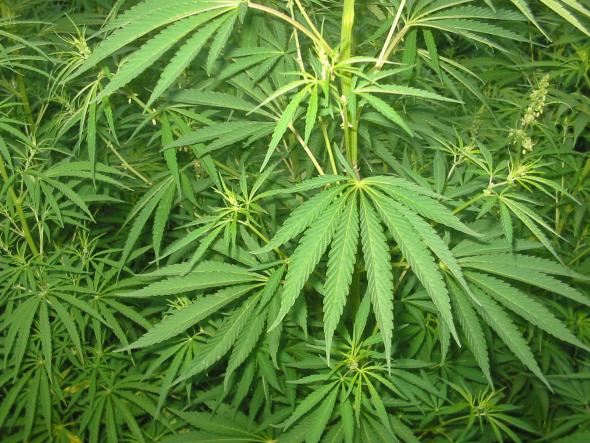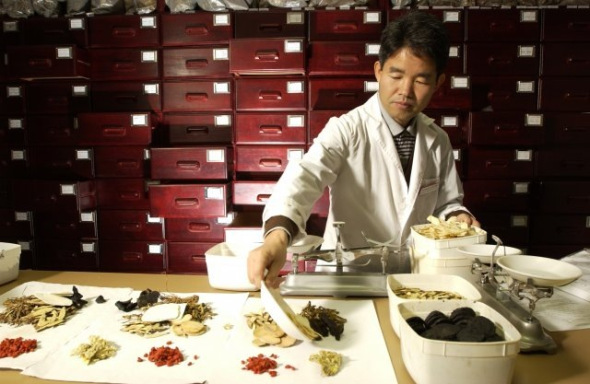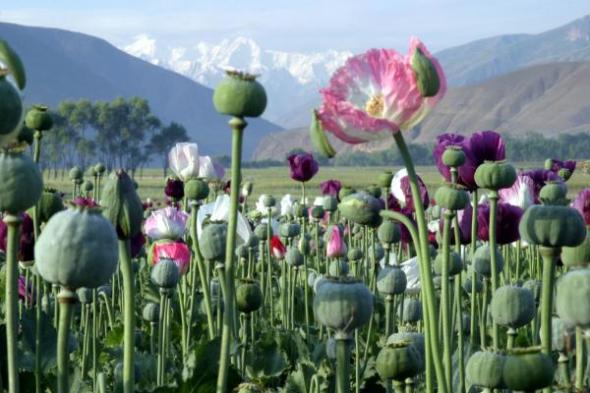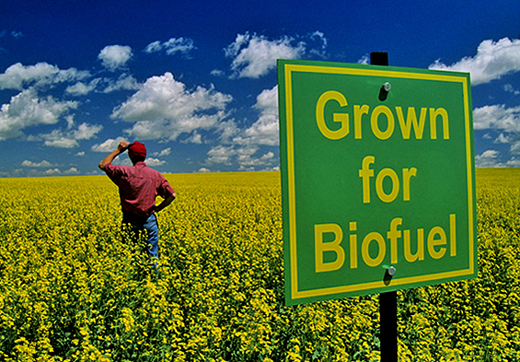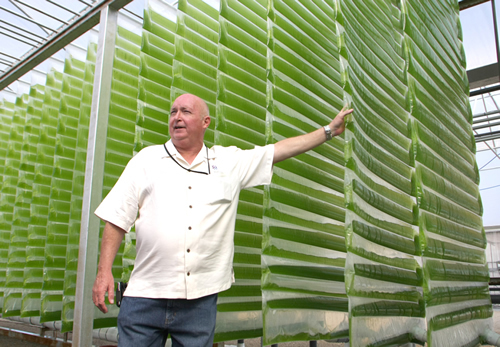ENDANGERED SPECIES MONDAY | SUNDASCIURUS HIPPURUS
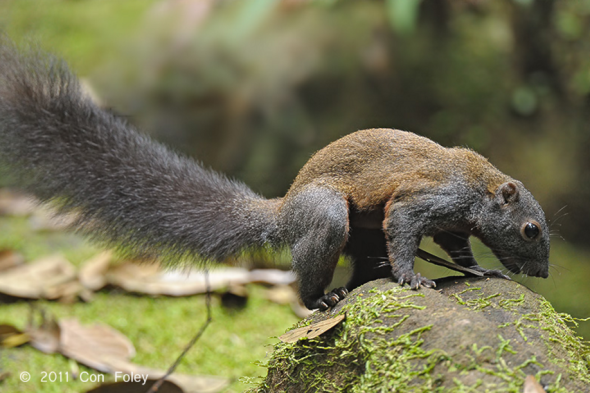
ENDANGERED SPECIES MONDAY | SUNDASCIURUS HIPPURUS
This Mondays (E.S.P) post - [Endangered Species watch Post] I am documenting on the horse tailed squirrel, scientifically identified as Sundasciurus hippurus. (Image: Horse tailed squirrel. Credits: Con Foley)
Listed as [near threatened] the species was first discovered back in 1831 by French Dr Étienne Geoffroy Saint-Hilaire (15 April 1772 – 19 June 1844) who was a French naturalist who established the principle of “unity of composition”. He was a colleague of Jean-Baptiste Lamarck and expanded and defended Lamarck’s evolutionary theories.
Geoffroy’s scientific views had a transcendental flavor (unlike Lamarck’s materialistic views) and were similar to those of German morphologists like Lorenz Oken. He believed in the underlying unity of organismal design, and the possibility of the transmutation of species in time, amassing evidence for his claims through research in comparative anatomy, paleontology, and embryology.
Dr Geoffroy ‘allegedly’ named the squirrel ‘the horse tailed squirrel’ because the squirrels tail resembled that of a horse tail, although even I myself find that somewhat difficult to digest, as in all due honesty the tail looks more like a bushy tail, which horses don’t really host. Horses tend to have long, slender and non-bushy tails, while others do host a type of busy but lose tail. I could be wrong?!
While as yet I cannot prove this, I do believe that Dr Geoffroy may have named the squirrel after a wild dwarf Asiatic horse endemic to South East Asia - that as yet we environmentalists have as yet to discover more about, furthermore that species of horse is likely to be extinct.
Moving on and (as explained) the horse tailed squirrel has been listed as [near threatened]. From 1996-2012 the species was placed into the category of [lower risk/least concern]. Lower risk/least concern is defined as: A taxon is Least Concern when it has been evaluated against the criteria and does not qualify for Critically Endangered, Endangered, Vulnerable or Near Threatened. Widespread and abundant taxa are included in this category.
International Animal Rescue Foundation Asian Environmental Scientists have been studying this species (among others) and can confirm from camera traps that the mammal’s populations are still declining significantly. However to what extent we’re still unsure.
As yet there have been ‘no reported extinctions’ within anyone of the species endemic countries being: Brunei Darussalam; Indonesia (Kalimantan, Sumatera); Malaysia (Peninsular Malaysia, Sabah, Sarawak) and Thailand. Since 2012 environmental fauna scientists have tried in vain to establish a mean population count, unfortunately as yet we (the organisation) and non-related organisations cannot determine a true population count.
Back in 2004 Dr’s Han and Giman pers. comm stated that the species was common, furthermore there was no evidence to prove the species was severely fragmented, or nearing endangered. The species prefers to inhabits lowland forests, however is also located in secondary forests too. Scientists reported that within these secondary forests species populations were on the decline.
Unlike your normal European squirrel the species can commonly be located at ground level foraging for food ranging from nuts, fruits, seeds and insects. Interestingly the species is diurnal (again unlike the European squirrel). Diurnal means the species will be active either during the day or night. Whereas the European squirrel is normally pretty active during the daytime, then rests during the night.
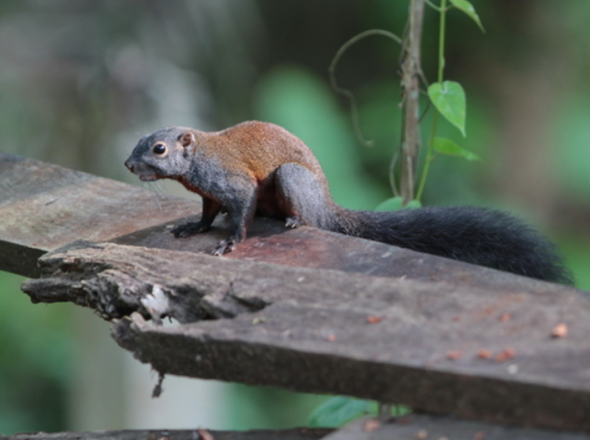
Image: Horse tailed squirrel: Photographer unknown
While the species ‘often lives within the trees’, horse tailed squirrels will spend a majority of their time at ground level. It has been suggested that one of the reasons for low densities of this species in Malaysian tropical rain forest is competition from the great variety of other arboreal vertebrates (such as birds, and especially primates) for food, especially fruits and leaves, which are among the food items preferred by squirrels.
There are by few very few threats actually known, however don’t take that as positive news. The species is threatened by habitat loss due to logging and agricultural conversion. I expect the first extinctions are likely to be witnessed within Malaysia (based on past and current research). Malaysian deforestation and palm oil plantations all pose a very high threat to the horse tailed squirrel as well as many other species of flora and fauna.
Nearly 60% of Malaysia is still covered with natural rain forest, unfortunately much of Malaysia forests are devoted to cash crop plantations, particularly oil palm and rubber, with tree crops occupying 17% of Malaysia’s land area. These are ideally suited to Malaysia’s hot, wet, and humid climate.
While many of us are aware of ‘palm oil devastation’ which is probably by far the biggest threat to a wide number of animals and plants - including the horse tailed squirrel. I would also like to point out to many non-meat and dairy consumers (I.e: Vegans), that while coconut plantations are for now considerably small. These plantations are still being developed and farmed within areas that once saw pristine green forests - now nothing more than a brown churned up heap of land growing and harvesting coconuts too.
In Malaysia, coconut is the fourth important industrial crop after oil palm, rubber and paddy in terms of total planted area. It is also one of the oldest agro-based industries. As an industry, coconut contributes very little to the overall economy of Malaysia (contribution to export earnings of about 0.08% in 2006).
Recent competition with oil palm for land has also resulted in the decline of the total area under coconut cultivation: in 2001, the area was about 151,000 ha and this has gradually decreased to the acreage of 109,185 ha in 2007. Based on the estimates given under the 9th Malaysia Plan, it is anticipated that the acreage will consolidate to around 80,000 ha by 2010. However regardless of this ‘alleged decline’ most if not all coconut plantations are farmed within forests where species such as the horse tailed squirrel is inhabiting.
The species is found in several protected areas, including Pasoh Forest Reserve. Environmentalists state the need for further comparative study on this species’ abundance, density and distribution and its relationship to forest structure or habitat quality, spatially and temporally, in hill dipterocarp forest of Malaysia is greatly needed.
For now the future of the horse tailed squirrel is uncertain. I’m doubtful the species will remain extant within Malaysia for much longer - with possible localized extinctions witnessed here soon. More research needs to be undertaken on the species, furthermore we also need to research just how much ‘pristine green forest is being converted for fruit, cereal crops, oils and plant milk crops’ rather than just palm oil. While I find palm oil agriculture incredibly concerning. Knowing that anyone of our vegan, vegetable and fruit crops is originating from areas where animals are being killed - is just as concerning too.
Thank you for reading.
Dr Jose C. Depre PhD. MEnvSc. BSc(Hons) Botany, PhD(NeuroSci) D.V.M.
Master of Environmental Botanical & Human Science.
(Environmental, Botanical & Human Scientist).
Environmentalism chapter 1 January - 2013
Cannabis or Marijuana as it is better referred to is a botanical species of plant that is grown on the earth since around 2000 BC from which it was more of an aggressive shrub to small tree that lived and thrived all over the world provided it has adequate sunlight, water, heat and nutrients which is the four basic necessities which our botanical species require to live and thrive.
Cannabis is the correct botanical term of this plant which had a growth height of six to twelve feet depending on continental area and climate with a spreading distance of roughly eight feet. The largest recorded girth of such Cannabis tree was estimated at 103cms that had lived for approximately sixteen years with a height of just under thirteen feet although this has yet to be fully confirmed as factual by botanical historians.
The Marijuana plant was used by the ancient Chinese indigenous people as a psychoactive herb back in 2000BC to smoke, eat and drink as well as dress making although consumption of the plant in raw form was what the Chinese tribes known as Gushi’s preferred to use the plant for using the other psychoactive plant Opium or better known as the Poppy for medicinal use too.
There is vast botanical history with regards to the Cannabis plant just like millions of other species of plant life that have thrived on the earth then and still today, the Indian tribes that came across Cannabis are the real first users within of the plant dating back to around 1400 2000 BC which they referred to the Marijuana plant as the food of gods however it was used more in liquid form as a drink and not “substance” due to the stomach being able to absorb the hypoactive chemical properties of the drug much faster than smoking it.
Cannabis was also mixed with Opium that gave an all-time round “natural high” due to the strong carcinogenic and relaxing chemicals within the plant. The main fundamental chemical was found by the ancient Chinese two thousand years ago as tetrahydrocannabinol, at this time no other synthetic drugs were formed and the remaining five chemicals and two synthetic laboratory chemical’s was not located as science hadn’t progressed to where we are today.
Cannabis contains exactly 483 chemical compounds with 80 of these cannabinoids that are used within the research of cannabis. Tetrahydrocannabinol is the “one” of the main active and powerful ingredients from the other five within the Cannabis plant although it wasn’t until the late 1990’s that the true pain reliving active ingredient was isolated within the structure of the plant’s chemical make-up. 2012 now sees a new study being undertaken of which will see primate and rodents researched on to trial new synthetic “non tetrahydrocannabinol related medicines” or (synthetic analgesia cannabis) which we are totally against.
Once the main active properties where truly understood and discovered within Cannabis this then led to high intense analgesics produced for mainly cancer sufferers and those that suffering from neurodegenerative diseases such as Alzheimer’s, Parkinson’s, Multiple Sclerosis, to Glaucoma and extreme behavioral problems, Fibromyalgia, Premenstrual Tension and Premenstrual Syndrome PMS and PMT.
The 1990’s though was not when this plant’s pain reliving chemicals where located and used. If one goes back to some 2000 years then one can see that it was used as a medical herb to treat an array of illness from nausea, vomiting, headache, diabetes, gallstones to aiding depression. I must state as a Botanist Traditional Chinese Medicine does not cure diabetes, or aid depression to many other illnesses that the Chinese quoted to curing via TCM. This is utter nonsense.
The main “active properties of Cannabis” where truly not fully understood nor was the main compounds of the Cannabis isolated to even made in to the synthetic form that it is today named as Marinol which was field tested in the last century on mainly Chimpanzees, Bonobos, Gorilla’s and Orang-utans as they shared more or less the same weight, fundamental behavioral patterns as us along with sharing exactly 97.9% of our Deoxyribonucleic acid or DNA. There are another 4 synthetic Cannabis medicines used to date too.
The main five chemicals that have been isolated out of the other 80 from exactly 483 are;
- Tetrahydrocannabinol - a compound, C 21 H 30 O 2, that is the physiologically active component in cannabis preparations (marijuana, hashish, etc.) derived from the Indian hemp plant or produced synthetically.
- Cannabidiol - is a cannabinoid found in cannabis. It is a major constituent of the plant, representing up to 40% in its extracts. It has displayed sedative effects in animal tests. Some research, however, indicates that CBD can increase alertness.
- Cannabinol – is a therapeutic compound found in Cannabis Sativia and Cannabis Indica that relaxes the central nervous system, it also acts as a week antagonist of the CB1 and CB2 receptors within the brain and central nervous system. This chemical is used mainly for opiate withdrawal for narcotic and prescription opiate misusers.
- Caryophyllene – This compound is normally isolated for tissue destruction, neurodegenerative diseases to glaucoma and light skin cancerous diseases. As it contains a vital BB2 reflector it aids not just humans but animals to that are suffering from chronic pain.
- Cannabigerol – similar to Cannabidiol it’s not psychoactive thus reducing hallucinations, nausea and vomiting once taken in “synthetic medicinal form” this fifth compound has been linked to reducing eye cornea and intraocular that’s especially useful for glaucoma sufferers and has been proven to work (whilst a solution is located and then the patient is relived of this debilitating disability) although this is not the case always of which the patient is then weaned of the drug and then placed on a more alternative NSAID.
- Pharmaceutical Tetrahydrocannabinol or (THC) in short along with THC derivatives have all been investigated, trialed and then tested of which the USA gave permission for the use of the “synthetic” forms of THC and its alternative “derivatives” more or less the same as (THC) but a man-made secondary substance which is a lot weaker. Those synthetic forms where approved in 1985-1997 and are still being used to this very day in the United States of America with some very few doctors using them outside of the states. However it is mostly illegal in this form as well as the non-synthetic form to use in most European nations simply because it has not been investigated and documented on adequate and there is also the fear like “alternative opiate antagonist receptive” medications like Subutex to Methadone that are the equivalent to Opiates being abused and sold on the streets.
http://www.sciencedirect.com/science/article/pii/S105381190500100X
The diagram above shows the difference between heavy usage and “controlled usage” or control group
So going through some of the basic but in-depth points here and leaving the hippy non-factual jargon “out” one can see that Cannabis has been around for some thousands of years, has been used by ancient Indian and Chinese indigenous people and has been used by many as a medicinal plant withing “medicine”. Cannabis has been known to be used as an analgesic in Traditional Chinese Medicine thus then used into today’s world as a more practical medicine. BUT WAIT!
We have already known that most of our medicines derived from the tropical forests and are being used today although they are under attack from climate change the paper and pulp trade plus illegal logging.
So what’s the fuss about? We have Opium that is made in to Codeine, Pethidine, and Morphine http://www.worldwidehealth.com/health-article-Unlocking-the-opium-poppys-biggest-secret.html we have the Taxus that’s made in to Taxanes producing Taxotere that fights breast and other cancers http://www.nationaltrust.org.uk/what-we-do/what-we-protect/gardens-and-parks/knowledge-bank/view-page/item739329/ we even have the Hypericum vulgaris which on the Hamilton Depression Score showed is at least as effective as paroxetine the “synthetic” antidepressant http://www.bmj.com/content/330/7490/503 like with all medicines one must also include the downsides to Hypericum as it does posses some side effects. You can read the studies here http://www.psychologytoday.com/files/attachments/51610/hypericum-nmj-article-december-2010-bongiorno-logiudice.pdf and here http://www.ncbi.nlm.nih.gov/pubmed/11939866
Whats the fuss about? why are people complaining about it not being legalized - Because Cannabis in non medicinal form is being abused hence why it is illegal to own the substance in many countries but “just legal” for roughly one to two rolled joints of Cannabis with tobacco. Its also only being used as “medicine with the main THC reduced or removed” to stop prescription abuse and psychological addiction.
Cannabis has many good points that many other botanical species of plants have to, however it is being used and abused and those that are abusing it are not only placing their own health in danger along with others through passive smoking and mental illness they are also not considering the damage they are causing to those that need the medicine in “synthetic form” as of its high natural analgesic and nausea reducing properties.
In a recent 2012 study by the United Kingdom Home Office the study stated;
“Cannabis use is now the biggest single cause of serious mental disorders in the UK, a leading expert warned yesterday. Up to 80 per cent of new patients at many units have a history of smoking the drug, said consultant psychiatrist Professor Robin Murray. The stark message comes just three weeks before the Government officially downgrades cannabis to Class C, putting it on the same level as growth hormones and prescription painkillers.
Doctors fear the change will wrongly lead young people to believe the drug is harmless and that more people will try it as they are unlikely to be prosecuted. Professor Murray, head of psychiatry at the Institute of Psychiatry, said the vast majority of psychotic patients - those who lose contact with reality and are unable to function in their daily lives - have used cannabis.
The Government has a duty to warn people of the “possible downside” after pressing ahead with plans to downgrade the drug despite widespread concern, he said, adding: “There is a terrible drain on resources. “Not only are there people suffering from psychosis who would not be in in-patient beds if they were not using cannabis, but the drug also drastically reduces recovery - people who improve go out on the street, meet their dealer, use the drug again and relapse. “I would say this is now the number one problem facing mental health services in inner cities. “In South London, the incidence of psychosis has doubled since 1964.”
About 3.2million people in the UK use cannabis regularly and a third of all 15-year-olds have tried the drug, according to official figures. Professor Murray, a consultant psychiatrist at the Maudsley Hospital in South London, said there were no experts in psychosis on the committee that advised the Government on cannabis classification.
He added: “Since then, there have been at least four studies that show the use of cannabis, particularly in young people, can significantly increase the likelihood of the onset of psychosis.” Professor Murray himself led a study last year which showed that cannabis users are seven times more at risk of developing mental illness than the population in general.
Experts believe the figures reflect the fact that cannabis typically contains ten times as much tetrahydrocannabinol (THC) - the crucial ingredient which induces the feeling of being “high” - today as it did in the 1960s and 1970s. THC disrupts the chemical balance in the brain. This may result in memory loss and anxiety and cause excess levels of dopamine, a symptom associated with schizophrenia.
Cannabis also causes cancer and lung disease and doctors say it could be responsible for 30,000 deaths a year in the UK. It will be downgraded from January 29, after which those caught in possession for personal use can expect the police simply to confiscate the drug and issue a routine warning. A Home Office spokesman said: “The point of the reclassification is to allow police to target class A drugs like heroin and crack cocaine, which cause the most harm to families and the community.
“The view of the medical experts on the advisory council that advised on the reclassification remains unchanged.”
In a another report 1999 by Borges, Walters, and Kessler the report on to chirp;
“The question of suicide and cannabis use is considered by Borges, Walters, and Kessler who examined whether cannabis use heightens the risk of suicide or attempted suicide. Cross-sectional data from the US National Comorbidity Survey indicated that cannabis-dependent individuals were 2.4 times more likely to report a suicide attempt than non-cannabis-dependent individuals, after controlling for socio-demographic factors, psychiatric disorders and other drug use. Beautrais et al. (1999) examined 302 hospitalized cases of suicide attempts and found that 16% screened positive for cannabis abuse or dependence, compared with 2% of a random community sample. After controlling for depression and social disadvantage the study found this translated to a twofold suicide attempt risk for those who had a cannabis use disorder.
In a 2012 August report the report goes on to state (factual evidence) from a twenty five year study;
The new study followed participants from birth till the age of 38. Researchers administered cognitive testing (that measures intellectual abilities such as IQ) at two time periods: when the participants were 13—before they began regular marijuana use, and when they were 38 years-old. Participants’ marijuana use was ascertained via interviews at four other time periods as well; when the subjects were 18, 21, 26, and 32 years-old.
The researchers assumed that because the teenage brain is still developing, regular marijuana use would affect the brains of teenagers and adults differently. Their data allowed them to compare any cognitive/intellectual changes that occurred in chronic marijuana users who began smoking in their teens to changes that occurred among chronic users who started smoking pot as young adults or adults.
The Findings
Researchers found that participants who began chronic marijuana use in adolescence showed significant cognitive and intellectual declines by age 38, with heavy users dropping as much as 8 IQ points. Chronic users who began later in life showed significantly smaller declines across all measures. In addition, the more persistent their marijuana use was in adolescence, the greater the cognitive declines the participants exhibited later in life. Further, ceasing marijuana use in adulthood did not fully restore these declines among users who started in their teens.
The Conclusion
Although these findings need to be replicated by other studies, they contribute to a growing body of research demonstrating the vulnerability of the teenage brain, in this case, to the neurotoxic effects of chronic cannabis use. The study does not suggest regular marijuana use has no detrimental affects for adults, only that cognitive declines were more significant for users who began smoking in their teens.
Since developing dependence might have extremely damaging and non-reversible affects in adolescents (especially when chronic use persists into adulthood), parents, educators, and especially teenagers should become informed about the potential harm of initiating marijuana use at young ages.
Cannabis is also the top number one “illegal” drug used in “high quantities” to date with Heroin, Amphetamine, Ecstasy, and Cocaine being the next in line report published http://www.testcountry.co.uk/info/Top_5_Most_Abused_Drugs_in_the_UK
There are then also again the major agricultural and climate problems that are going to become even worse should the go ahead be given to farm yet another crop in all parts of Africa to even more continents for Hemp consumption.
Industrial hemp as it is better known is still the same “species” as the “psychoactive Cannabis plant”. The hemp plant just has less Tetrahydrocannabinol than that of its cousin of which in total there are 2000 species of the Cannabis plant with literally 150-200 being used for the use of heavy narcotic abuse to professional usage in the medical world producing pain reliving and relaxing medications.
The hemp plant is used to date in “many” nations to produce Paper, textiles, clothing, biodegradable plastics, construction (as with Hempcrete and insulation), body products, health food and bio-fuel. Hemp is thus legally grown in many countries across the world including Spain, China, Japan, Korea, France, North Africa and Ireland. Although hemp is commonly associated with marijuana (hemp’s THC-rich cousin), since 2007 the commercial success of hemp food products has grown considerably.
Hemp is one of the faster growing biomasses known, producing up to 25 tonnes of dry matter per hectare per year. A typical average yield in large scale modern agriculture is about 2.5–3.5 t/ac (air dry stem yields of dry, retted stalks per acre at 12% moisture). Approximately one tonne of bast fiber and 2–3 tonnes of core material can be decorticated from 3–4 tonnes of good quality, dry retted straw.
Hemp like the palm oil plant that are both still relatively new to the agricultural world hence now the use of them in foods are warming the planet’s ozone, causing soil erosion loss that is more than evident and proven all throughout the world and scientific journals, is adding up to more land use with more green natural forests and natural medicinal plants being wiped out this in turn = more animals displaced which = hunting to move animals that have been moved on to other land by over farming and usage of “alternative agricultural crops” = “Flora and Fauna Endangerment” (The hunter calls this though land invasion) what the hunter doesn’t realize is it that he (part of the human race) is actually responsible for this catastrophic vicious circle just like every other human.
In 2008 the Royal Society for the European Commission stated;
(The report had to be criticized by uneducated media as usual)
The Royal Society, the European Commission and the UK government have all managed, in the last few days, to take the wind out of the sails of the bio-fuel industry, publishing reports that suggest bio-fuels could be causing more harm than good, the crops not being as environmentally friendly as first thought, with the Commons environmental audit committee calling for a moratorium on bio-fuel targets until more research can be done.
Last year, the Conservative MP David Maclean tabled a question to the then environment secretary, Ian Pearson, asking what assessment had been made about the potential to grow hemp as a bio-fuel crop in England. Pearson responded: Research into the potential of hemp as a bio fuel crop suggests it is not currently competitive compared to other sources of biomass. However, hemp does have a number of high-value end uses. For example, as a fiber crop it is used in car panels, construction and as horse bedding. In addition, hemp-seed oil is used in food, cosmetics and various industrial applications. As a result, there is little interest in this country at present in growing it for bio-fuel production.
The arrogant most likely Dope smoker goes on to state -
So the government cannot point to ignorance of hemp’s uses, which makes hemp’s omission from any of the recent reports even more perplexing. The fact that hemp does not need to have land cleared to grow it, grows faster than any of the crops currently used and leaves the ground in a better state when it is harvested should surely be enough for it to be considered a perfect crop to offset the carbon currently produced by fossil fuels and by the less efficient bio fuels currently being so roundly criticized by the various official research bodies. (WRONG HEMP DOES NEED LAND CLEARED) by growing hemp and harvesting one is adding more damage to the ozone, more carbon, more soil erosion, more soil evaporation more land needed as of “customer demand”
The influential Bio diesel magazine reported last year on the cultivation of hemp as a bio fuel and it too could only point to its lack of economic competitiveness (due to its minimal production) as a reason for not seeing it as a viable bio-fuel But surely if it was mass-produced, this one drawback could be overcome and its many benefits as an efficient bio-fuel could be harnessed. As far as research and implementation of hemp for bio-fuel the US is way ahead of Europe and there are a range of websites dedicated to the use of hemp as a fuel for cars.
In the UK, companies such as Hemp Global Solutions have been set up very much with climate change and the reduction of carbon emissions in mind, but there is little, if any, research in this country that has looked into the viability of the hemp plant as a fuel for cars. So why was there not a single mention of this miracle crop, that, in addition to being able to be used as fuel, can also be used as paper, cloth, converted into plastic and is a rich food source containing high levels of protein?
What we see and many other environmentalists is just another answer to the “symptoms” and not curing the actual problem here with climate change. Not wishing to move “too much of the Cannabis issues here” one does have to understand though like when treating a human with an illness if one continues to mask the symptoms then the underlying problems i.e. climate change will only become worse.
In today’s modern world we have rape seed, palm oil, corn, switch grass and wildflowers. We also have to take into account the arable farms becoming by far greater as of families wanting “more” on the good side though family size has been “decreasing” since early 2001. Take America the average family size for the Census of 2010 showed a dramatic drop of the big families lowering considerably http://baltimore.cbslocal.com/2011/05/26/census-shows-average-md-household-size-stabilized/ however what the governments seem to be forgetting is that although the family sizes are lowering immigration and illegal asylum is increasing thus = more homes, schools, and hospitals constructing to cope with the vast influx of immigrants and illegal immigrants.
It’s already a fact that Palm oil is here to stay as the RSPO www.rspo.org has now demanded along with governments to press ahead for “sustainability of palm oil agriculture” which is a sustainable compulsive lie.
We have ethanol and other fuels, now the governments are wanting, “more” agriculture from industrial cannabis hemp farms. This is not the answer and is only destroying more fragile forest green-land, more botanical species, displacing more people and animals = human and animal habitual destruction and loss.
Palm oil and rape seed oil are the number one Bio fuels at this moment BUT there are other alternatives such as algae and this is fantastic as it does not need vast forests to be ploughed down, on a monthly basis, algae doesn’t need to be dug up and then replanted again = soil erosion and agricultural fumes = carbon footprint. Algae grows from water waste in vast tanks of which is used for “bio fuel” the number one answer “for all bio fuel and arable feed to more” and the governments are pushing for this at last (but not fast enough).
Advantages of Algae fuel to palm and Industrial Cannabis Hemp are;
No need to use crops such as palms to produce oil. Algae oil extracts can be used as livestock feed and even processed into ethanol. High levels of polyunsaturates in algae bio-diesel are suitable for cold weather climates. Grows practically anywhere. Can reduce carbon emissions based on where it’s grown.
“Vertical farming using algae is already in the system and outweighs on the good factor most everyday farming including hemp farming that it just going to cause more problems in the long run to the environment and more displacement”
Now this is new up to date research, 2012. Yes it needs to be on a vast scale. In the long run but there is no slashing and burning of trees + massive reduced animal displacement and habitual destruction + can be grown at just about any location on the earth rather than that of the palm oil tree that has to be grown in the tropics along with Corn, Hemp and Rape seed that need warm stable climates = Algae = Less environmental destruction, very low carbon output, and no need to soil tilling = Less soil erosion, dust storms, soil evaporation, and over usage of water.
We have a long way to go yet as humans to fully understand what is good and what is bad for us, however if we keep masking the symptoms and not treating the problems then by 2050 the world’s climate temperature will heat up by another 3-4oc that’s 1-2 oc more than the safe recommended level.
The further this goes on generations of our children to flora and fauna will suffer dearly.
Cannabis plantations for farming to using cannabis for recreational use is just tantamount to more human misery for our teenagers along with our climate suffering more as of negligent idiotic governments and propagandist’s swaying the public because they want to make a quick buck.
Dr J C Dimetri V.M.D, B.E.S, Ma, PhD , MEnvSc
To be continued ………….

